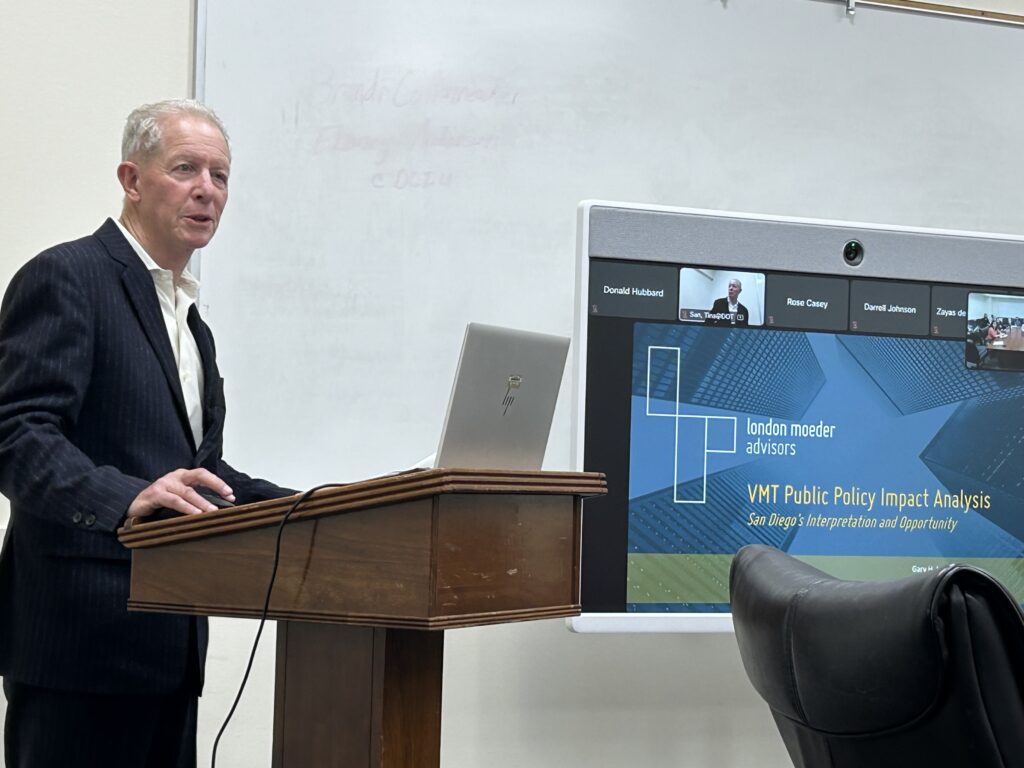A newly commissioned study by leading San Diego economists with London Moeder Advisors (LMA) reveals the significant negative impact of San Diego County’s Vehicle Miles Traveled (VMT) policy on homebuilding, further exacerbating the region’s housing crisis. The analysis, commissioned by the Building Industry Association of San Diego County (BIA), underscores the urgent need for the county to revise its approach to VMT regulations to support housing development.
“This thorough analysis sheds more light on how destructive the county’s VMT policy is,” said BIA CEO Lori Pfeiler. “The BIA is strongly encouraging the county to adjust this policy as soon as possible to clear the way for more housing.”
The county’s VMT policy was designed to address climate concerns, but it may actually harm our environment, LMA’s Senior Principal Gary London said. Because the policy has stymied housing production locally, more and more San Diegans continue to buy homes they can afford in Riverside County and commute to and from jobs here in San Diego County, which eclipses any carbon emissions that can be achieved through the county’s VMT regulations.
London said: “If the county’s goal is to stop housing development, their VMT policy has succeeded. However, if the goal is to reduce vehicle carbon emissions, the policy has failed miserably.”
The LMA study states: “A growing concern is the I-15 corridor commute, where an estimated 47,073 persons commute from their homes in Riverside County to their San Diego jobs, a clear indication of the housing/job connection. This issue is compounded by the 60,000 northbound vehicles crossing the border by individuals who reside in Tijuana and work in San Diego County.”
The county’s General Plan originally envisioned the development of 58,000 homes in unincorporated areas to meet growing demand. However, the county’s adoption of the Transportation Study Guide in 2022, which incorporated VMT as a metric for assessing transportation impacts under CEQA, drastically increased barriers to build new homes. While the county recently attempted to promote housing development in so-called “VMT Efficient Areas,” but these sites would accommodate fewer than 3,000 housing units, and many of the sites selected by the county are not conducive for the development of homes, according to the county’s own Development Feasibility Analysis (DFA).
As a result of the confluence of strict “environmental” rules, homebuilders have been unable to move forward with as many as 10,000 much-needed housing units previously approved by the San Diego County Board of Supervisors, the London Moeder analysis found. Some homebuilders have simply stopped doing business with the county at a time when housing applications should be encouraged to help meet the growing demand and address our housing affordability crisis.
“Costly regulations like the VMT policy only serve to stymie housing production and exacerbate our housing crisis, driving up home prices even more, and disenfranchising an even greater number of San Diegans, many of whom are already priced out of our unaffordable housing market,” Pfeiler said.
“Despite the best efforts by the City of San Diego and some other municipalities, only the unincorporated areas of the county, where there is land to build, can close the massive housing unit deficit – estimated at 75,000 units – harming our region,” Pfeiler said. “But instead of closing that gap, the county is pricing out middle-income families, contributing to out-migration, harming our environment, and negatively impacting our regional economy.”
According to soon to be released 2024 General Plan Annual Progress Report, the County of San Diego experienced an 11 percent reduction in newly permitted homes from 2023 to 2024. Of the 1,088 permitted homes in 2024, 489 (45 percent) were ADUs. The London Moeder analysis warns that continued implementation of current VMT policies will make it nearly impossible to meet housing goals outlined in the county’s General Plan.
The BIA has formally urged the County Board of Supervisors to eliminate its VMT policies and work diligently to implement the original housing goals outlined in the General Plan. “Without adjustments to the current policy, housing availability in San Diego County will continue to dwindle, further straining affordability for working families,” Pfeiler said.

Economist Gary London of London Moeder

